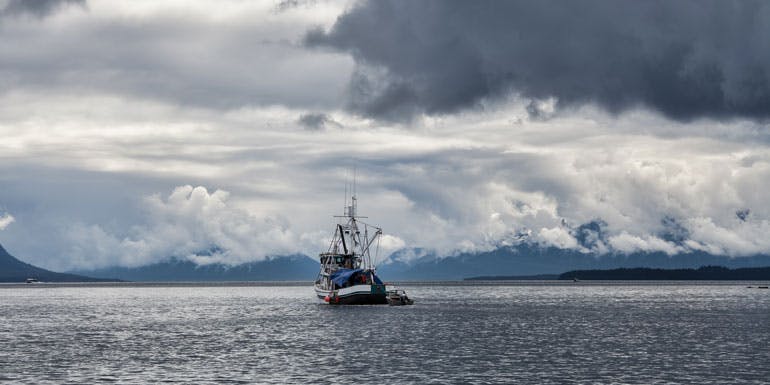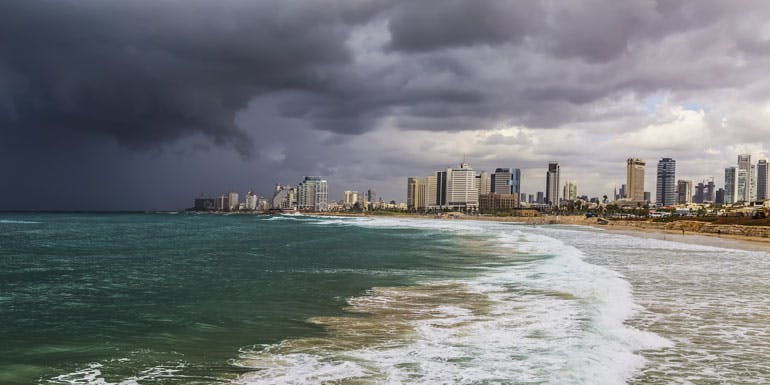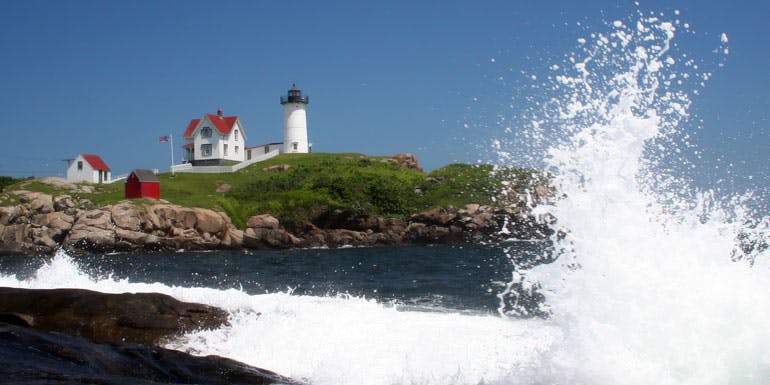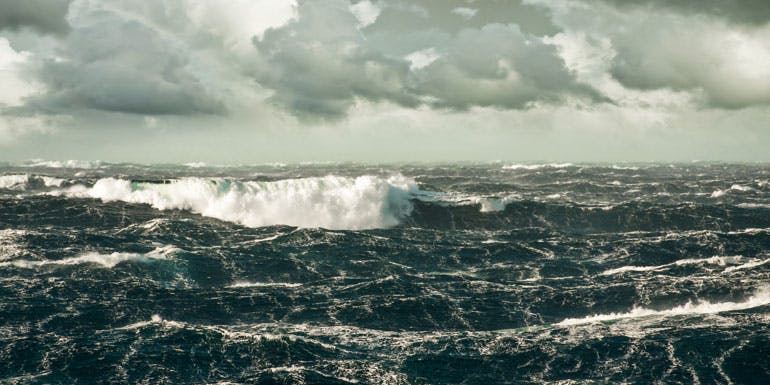How to Avoid Rough Seas on a Cruise

While a cruise ship in rough seas can be unpleasant, it rarely results in a canceled voyage. However, it may make nausea-prone passengers seasick and force the ship to skip ports.
Rough waters can occur anywhere at any time, but because of ocean currents, high winds, and nearby landmasses — or the lack thereof — some itineraries can be expected to have particularly rough seas at certain times of the year. So even though you can’t predict the weather months before your cruise, you can increase your chances of smooth sailing by not booking during the stormiest seasons (like hurricane season in the Caribbean). Here are the roughest seas you are most likely to encounter on a cruise and when to avoid them:
Africa

Waves smash against the Cape of Good Hope. - Francesco Dazzi
Routes: South African cruises depart from Durban or Cape Town, traveling as far north as Madagascar. Western Africa cruises depart from Spain and cruise as far south as Freetown in Sierra Leone.
Issues: The Cape of Good Hope on the southern tip was originally called the Cape of Storms. Although not the official dividing point between the Atlantic and Indian oceans, it is where the cold water current meets the warm water current.
Avoid: The currents, combined with the directional shift in the landmass from south to east, create rocky seas year-round, but winter (May through July) sees the most frequent gale-strength winds.
Alaska

Stormy skies in Southeast Alaska - M. Cornelius
Routes: Alaska cruises depart from Seattle or Vancouver and travel via the Inside Passage, between the Pacific coast and a string of islands. The shelter these islands provide typically means smooth sailing to Ketchikan, Juneau, and Skagway ports.
Issues: Cruising to Anchorage, Seward, or Whittier means crossing the rough Gulf of Alaska, where strong surface currents and cold arctic air generate powerful storms that affect British Columbia and the western U.S.
Avoid: Water here can be rough year-round. The months from October to February are particularly stormy, so watch out for the tail end of the cruise season.
Asia

Typhoon Haiyan batters the Philipines. - Richard Whitcombe
Routes: Most cruises depart from Singapore, although Hong Kong, Beijing, Shanghai, and Bangkok also serve as departure ports. China, Cambodia, Myanmar, Thailand, and Vietnam are the most frequently visited.
Issues: The strongest typhoons — the Pacific version of a hurricane — hit the South China Sea, so cruising between China and southern Asian countries like Taiwan, Cambodia, and the Philippines can be especially rocky.
Avoid: Typhoons typically occur in the northwest Pacific from July through November.
Baltic

Storm clouds gather over a beach in Latvia. -Aleksey Stemmer
Routes: Cruises depart from Copenhagen or Amsterdam, or the English ports of Harwich or Southampton, and sail east toward St. Petersburg in Russia. Cruises from England are longer and typically encounter rough waters crossing the North Sea.
Issues: The Baltic is sheltered from open waters by the Scandinavian countries, so it’s much gentler than the neighboring North Sea. Still, it’s prone to sudden, strong thunderstorms.
Avoid: Thunderstorms are most likely from May through August, but the eastern ports of St. Petersburg and Helsinki are the most commonly affected.
Caribbean

Hurricanes can derail a Caribbean cruise itinerary. - Terekhov Igor
Routes: Caribbean cruises are divided into eastern, western, and southern itineraries.
Issues: Hurricanes and tropical storms are the number one cause of rough waters in the Caribbean.
Avoid: The season lasts from June through the end of November, but most storms occur during August and September — so beware of fall sailings. Any Caribbean island can be hit by a hurricane, but the Bahamas and the British Virgin Islands have had the most storms make landfall.
Mediterranean

Storms clouds over Tel Aviv. - Volkova Natalia / Shutterstock
Routes: Western Mediterranean cruises usually depart from Barcelona or Rome and call in Spain, France, and Italy; eastern Mediterranean cruises often depart from Venice or Istanbul and call in Italy, Greece, and Turkey.
Issues: Late fall and winter can bring heavy rains and thunderstorms.
Avoid: The region is hit at least once a year by a “medicane” — a tropical storm most common in the fall in the western Mediterranean. These storms can also hit the Ionian Sea during January and February.
Northeast U.S./Canada

Crashing waves off the New England coast. - William J. Mahnken
Routes: Cruises sail north from New York or Boston or out of the St. Lawrence River from Quebéc and Montréal, visiting Canadian and American ports along the Eastern Seaboard.
Issues: Since this region is part of the Atlantic, you can expect waves. Still, with the shore close by, these cruises aren’t nearly as rough as a transatlantic crossing.
Avoid: Fortunately, the biggest waves are seen in winter, when few cruises sail here.
South America

The stormy Drake Passage - damerau
Routes: Travel between Buenos Aires, Santiago, and Sao Paulo.
Issues: The Drake Passage, between the Shetland Islands and Cape Horn, is commonly regarded as the roughest water in the world during the winter months.
Avoid: Any cruise rounding Argentina will encounter the Drake Passage. If you’re cruising during their winter (our summer), avoid the passage by sailing round trip from Buenos Aires or Sao Paulo without calling on the west coast.
Transatlantic and Transpacific

Huge waves on the Atlantic - Oskari Porkka
Routes: Transatlantic cruises sail between London and New York, while transpacific cruises include anything between North America, Hawaii or Asia.
Issues: Ocean crossings always encounter the roughest waters because there are no nearby landmasses to provide shelter.
Avoid: The winter months are the most intense, with transatlantic cruises hitting very rough seas from November through February and Pacific cruises from February through April.
Related Articles:
How Does Hurrican Season Affect Cruises
7 Steps to Keep Bad Weather from Ruining Your Cruise
Join the discussion
Where were the roughest seas you’ve encountered on a cruise?
1 Comment
Posted by Test2
It's a great article! Very informative